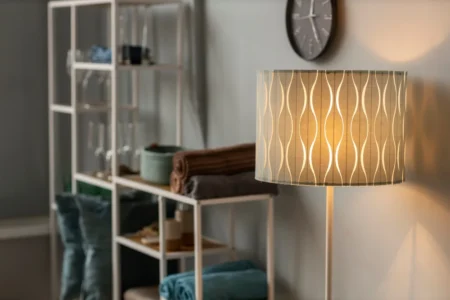 Lighting design plays a crucial role in creating a comfortable and stylish living environment. From setting the mood to enhancing functionality, the right lighting can transform your home into a welcoming and visually appealing space.
Lighting design plays a crucial role in creating a comfortable and stylish living environment. From setting the mood to enhancing functionality, the right lighting can transform your home into a welcoming and visually appealing space.
Investing in the right lighting design is essential for creating a comfortable and stylish home that meets your needs and reflects your taste. By carefully considering factors such as mood, functionality, architectural features, visual comfort, and energy efficiency, you can achieve optimal illumination in every room of your home.
Take the time to plan and design your lighting scheme thoughtfully, and enjoy the transformative effects of well-lit spaces that enhance both comfort and style.
Today, we’ll delve into why getting the right lighting design is essential for home comfort and style, and provide insights into how to achieve optimal illumination in every room.
Setting the Mood
The type of lighting you choose can significantly impact the mood and ambiance of your home. Whether you’re looking to create a cozy atmosphere for relaxation or a vibrant setting for entertaining guests, lighting design allows you to set the mood to suit any occasion.
For example, incorporating dimmable LED lights in the living room gives you the flexibility to adjust the brightness according to your preferences and activities. Soft, warm-toned lighting can create a relaxing ambiance in the bedroom, while bright, task-oriented lighting is ideal for the kitchen or home office.
Enhancing Functionality
Proper lighting design enhances the functionality of each room in your home by providing adequate illumination for various tasks and activities. Whether you’re cooking, reading, or working on a project, having the right lighting ensures optimal visibility and comfort.
For instance, installing under-cabinet lighting in the kitchen illuminates countertops and workspaces, making food preparation and cooking tasks more efficient and enjoyable. In the bathroom, a combination of task lighting around the vanity mirror and ambient lighting overhead ensures proper visibility for grooming and personal care routines.
Highlighting Architectural Features and Decor
Well-designed lighting can highlight architectural features and decor elements, adding depth, texture, and visual interest to your home’s interior. By strategically placing lighting fixtures, you can draw attention to focal points, artwork, and other design elements, creating a cohesive and harmonious aesthetic.
For example, recessed lighting can accentuate a textured accent wall or architectural details such as crown molding or wainscoting. Directional spotlights or track lighting can showcase artwork or sculptures, adding drama and sophistication to your home decor.
Creating Visual Comfort and Balance
Balancing different types of lighting creates visual comfort and harmony in your home. By layering ambient, task, and accent lighting, you can eliminate harsh shadows, reduce glare, and create a well-balanced lighting scheme that enhances the overall comfort and visual appeal of your space.
For instance, pairing overhead ambient lighting with table lamps or floor lamps provides multiple sources of illumination that can be adjusted to suit different activities and preferences. Adding decorative pendant lights or chandeliers can also add a touch of elegance and sophistication to your home’s interior.
Incorporating Energy Efficiency and Sustainability
In addition to comfort and style, proper lighting design can also contribute to energy efficiency and sustainability in your home. Choosing energy-efficient lighting fixtures, such as LED bulbs or compact fluorescent lamps (CFLs), reduces energy consumption and lowers utility costs while minimizing environmental impact.
For example, replacing traditional incandescent bulbs with LED equivalents can result in significant energy savings over time. Additionally, installing lighting controls such as timers, motion sensors, or smart lighting systems allows you to optimize energy usage and reduce waste by automatically adjusting lighting levels based on occupancy and natural light conditions.
Picture Credit: Freepik



